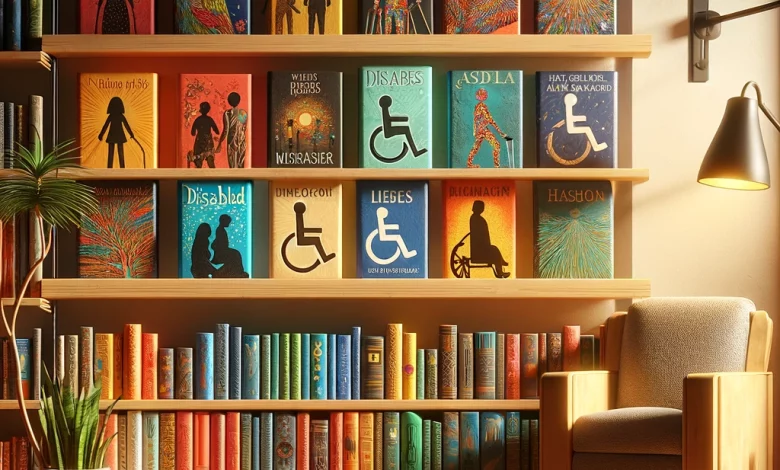
20 books with a disabled character as the lead or focus of the story
How often have you read a book with a disabled character, let alone a protagonist? Bookworm Raya runs-down about eight books with a disabled character as the lead or where they are the focus, many of which have since been made into popular films. In 2024 we updated this post to find 12 bonus books for you.
They cover a wide range of disabilities, from paralysis and cerebral palsy to depression and learning difficulties, and make for interesting reading…
As an introvert, I have always enjoyed my own company. Most of my hobbies are of a solitary nature, such as reading. In addition, unlike other hobbies, I have also found them to be more inclusive, especially as I grew older.
I read a lot as a child. But I don’t recall having come across any books that had disabled characters. It made me wonder whether we, disabled people, were rare creatures.
Things have slowly begun to change and, nowadays, you more are likely to find a number of books, for various age groups, that deal with or include disability.
Here are eight books I have read that represent disability in different ways, both in narrative and tone, and are mostly positive.
My Left Foot
by Christy Brown
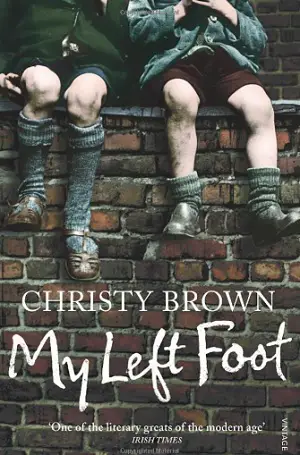
I read this book at a young age and I don’t think I fully appreciated the impact it had on the disabled community. Back then, I treated it as a feel-good story. It made me realise that, no matter what the nature of your disability, you can overcome negative attitudes and limiting barriers to pursue your dreams and passion.
The author of the book, Christy Brown, was born with cerebral palsy. He could only paint and write using his left foot. The book is his personal memoir, recounting how he struggled with people’s attitudes as he grew up in Ireland. Back then, it was eye-opening for readers, and still could be today. It was also made into a film in 1989, starring Daniel Day-Lewis.
I can’t say that this is one of my favourite books, but it has certainly made the biggest impression. Its message resonated with me and it was the first book I found that both focuses on disability and was written by a disabled author.
The Curious Incident of the Dog in the Night-Time
by Mark Haddon
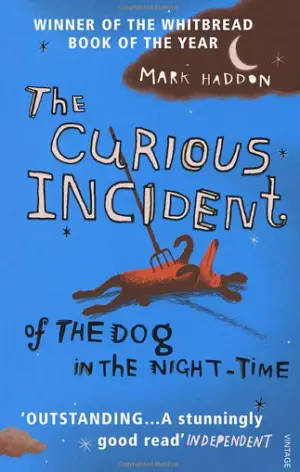
I read The Curious Incident a few years ago and I was so captivated by it that I could not let it go. I recall finishing it within 10 days, mainly because of its intriguing plot. But it was also because, prior to reading it, I had very limited knowledge of autism and what living with the condition entails.
The book is essentially a murder mystery with a twist that will keep you gripped. The protagonist, Christopher, is a 15-year-old teenager with autism when his neighbours’ dog is killed. Written from his perspective, he becomes the main suspect and so takes it upon himself to solve the mystery.
The Curious Incident is one of the books I was keen to pass onto friends to read. I felt that, at the time, autism was a condition that society knew little about. Unfortunately, it is still a disability that is misunderstood and carries many wrong assumptions and stigma. As such, I was thrilled to hear that it has also now been made into a show in the West End.
Find out more about The Curious Incident of the Dog in the Night-Time at the National Theatre.
Head to the Disability Horizons Shop to find stylish and practical solutions to everyday problems.
Behind Closed Doors
by B A Paris
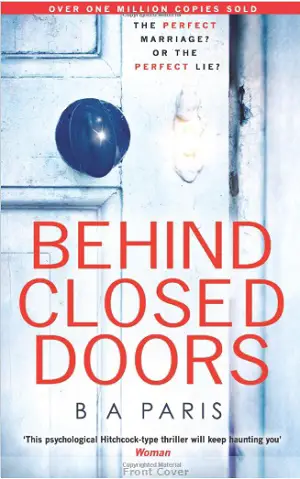
Behind Closed Doors is a mix of psychological thriller and domestic fiction that tells the story of Grace and Jack. To the outside world, they appear to be the perfect couple. But behind their closed-door lies an entirely different tale.
The book would not necessarily flag up in a search for disability-related titles because, ultimately, it’s not the focus of the plot. But the inclusion of Millie – Grace’s young sister who has Down’s Syndrome – means the plot, in my opinion, is dictated by the character of Millie. She triggers all of the events that shape the entire book.
The bond between the two sisters, and the sense of responsibility that siblings of disabled people often have, is part of what I like about the book. I was also pleased to see the subtle exploration of disability hate crime, plus parent rejection and the inability to care for Millie and accept her condition. All of these themes made the book memorable.
Of Mice and Men
by John Steinbeck
I very rarely get emotionally involved in a book, but Of Mice and Men was the first one to make me cry. George and Lennie are friends living during the American depression.
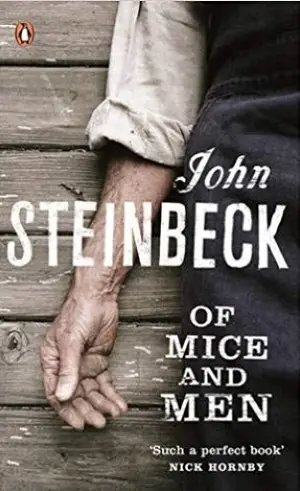
Although they are very different characters, both are dreamers. It is another book that has been dramatised on the big screen, with John Malkovich playing Lennie, and is studied in GCSE English in the UK.
This is probably the first book that I read with a character that has a learning disability. Lennie’s character highlights how the condition can be exploited by unscrupulous people and feared by some of those he meets simply because he is different.
The Secret Garden
by Frances Hodgson Burnett
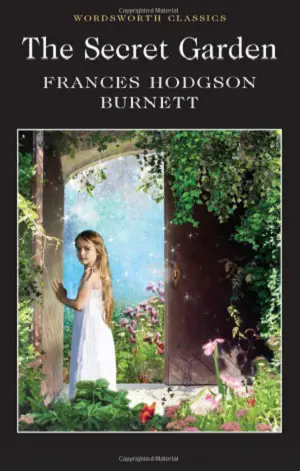
I read The Secret Garden at a fairly young age and I think I must have totally missed the fact that it has a disabled character. It is only recently, during a search on disability-related books, that the book came up.
Published in 1911, its main character, a young girl called Mary, befriends Colin a wheelchair user who never goes outside and is treated as an ‘invalid’. But, with the help of Mary, he is soon integrated into daily life.
Back in 1993, The Secret Garden was made into a popular film, although this was the third incarnation of it. Another version, starring Julie Walters and Colin Firth, will be out in cinemas in 2020.
The Bell Jar
by Sylvia Plath
The Bell Jar is a book that is quite close to my heart. I read it during my university years at a time when depression and suicide were a taboo subject that people rarely discussed.
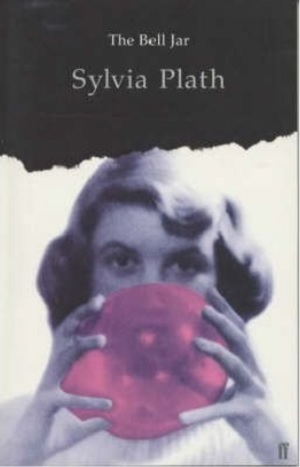
Prior to reading it, I was not a fan of Sylvia Plath. I used to find her poems heavy and morbid. But upon reading her novel – the only one she has written – I fell in love with her character and life.
The novel is semi-autobiographical as the protagonist struggles with depression, much like Silvia, who killed herself at the age of just 30.
Through the main character of Esther, we, the reader, get a sense of Silvia’s journey with depression and anxiety. For me, this was the first time that I truly understood what it entails and made me far more aware and understanding of the condition.
Wonder
by R. J. Palacio

Wonder, which was recently made into a film starring Julia Robert’s and Owen Wilson, is essentially a children’s book. But Palacio’s style of writing and narrative is so gripping and real that you, the reader, will be too focused on the plot to distinguish the readership group it is aimed at.
The main character August – or Auggie, as he is called – has a medical condition similar to Treacher Collins syndrome. It means that he has a disfigured face. In his early years, his parents choose to homeschool him. Once he reaches an age where he has to attend a mainstream school, his struggles begin.
The novel is written in chapters that give the reader the chance to view Auggie’s problems, not just through his own perception, but also through the perspectives of his parents, sister and friends. Because of this, Wonder has to be one of my favourite books. It opened my eyes to what my siblings must have gone through.
Me Before You
by Jojo Moyes

Jojo’s novel is a romantic fiction that I initially thought was giving a reasonable portrayal of a disabled person. That was until I reached the end of the novel and realised that Me Before You has actually been written from an ableist perspective.
The plot revolves around Louisa, who is unemployed but soon finds work as a carer for Will. He is a wealthy and once active young man who became a quadriplegic two years earlier through a traffic accident.
!SPOILER ALERT!
Will and Louisa soon fall in love. But that does not stop Will from rejecting his disability and choosing to end his life towards the end of the novel.
This was another book that made me shed a few tears. But it also made me incredibly angry. The writer is giving a very bleak view of disability, even though she has not actually experienced it. The message, to me, from an ableist view, is that life with a disability is not worth living.
I am including this book because, alarmingly, it was a bestseller when it was first published. Me Before You has also been made into a film. It is worrying to think that there are millions of readers and viewers who might be convinced that disabled people despise their disability and would rather die. A very unfair representation, not to mention a dangerous one.
By Raya Aljadir
Enhancing Disability Representation in Literature: A 2024 Update
In recent years, the conversation around disability representation in literature has gained momentum, reflecting a growing awareness of the importance of diverse and authentic portrayals of disabled characters. This update aims to build upon the foundation laid by previous discussions, highlighting new books and insights that contribute to a more inclusive literary landscape.
The Importance of Authentic Representation
Before diving into the latest book recommendations, it’s crucial to understand why authentic disability representation matters:
- Fosters Empathy and Understanding: Reading about characters with disabilities can promote empathy among readers who may not have direct experience with disability.
- Challenges Stereotypes: Authentic portrayals help dismantle harmful stereotypes and misconceptions about disabled individuals.
- Reflects Real-World Diversity: Including disabled characters in literature mirrors the diversity of the real world, where 15-20% of the population has some form of disability[20].
- Empowers Disabled Readers: Seeing themselves represented in stories can be empowering for disabled readers, affirming their identities and experiences.
New Books with Disability Representation (2024 Update)
Building on the momentum of recent years, here are twelve new books that feature disabled characters or themes, contributing to a more inclusive literary world:
Fiction
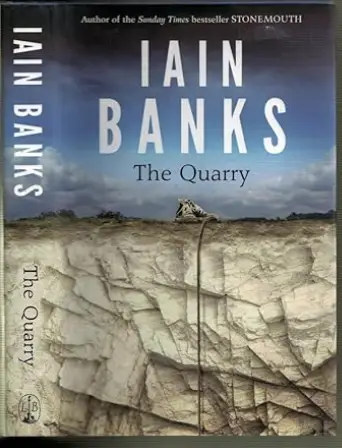
The final book by acclaimed writer Iain Banks is narrated by “Kit” who has a unique way of looking at things and is described as a “slightly autistic” young man who “struggles along and will make his way eventually”, even if he won’t make any dramatic leaps.
“The Sound of Stars” by Alechia Dow
A sci-fi adventure featuring a protagonist with anxiety navigating a post-apocalyptic world.
“The Pretty One” by Keah Brown
A collection of essays from a disabled writer, exploring life, love, and the importance of representation.
A gothic tale with a mute protagonist who communicates through sign language and written notes.
“The Sign for Home” by Blair Fell
Explores the life of a DeafBlind character navigating love and independence.
“All the Shining People” by Kathy Friedman
A collection of stories centred around Toronto’s Jewish South African community, with characters experiencing mental illnesses.
A powerful novel about the Deaf community, weaving together multiple stories of students and teachers.
Non-Fiction
- “Disability Visibility: First-Person Stories From the Twenty-First Century” edited by Alice Wong
- An anthology of essays by disabled writers, offering a wide range of perspectives on disability and activism.
- “Sitting Pretty: The View From My Ordinary Resilient Disabled Body” by Rebekah Taussig
- A memoir that shares the author’s experiences of being disabled, challenging societal perceptions.
- “Being Heumann: An Unrepentant Memoir of a Disability Rights Activist” by Judith Heumann with Kristen Joiner
- Chronicles the life of an influential disability rights activist.
- “Against Technoableism” by Ashley Shew
- “The Country of the Blind” by Andrew Leland
- A memoir of coming to terms with blindness, offering a cultural and personal exploration of disability.
- “Disability Intimacy” Edited by Alice Wong
- An anthology that illuminates the many meanings of intimacy for disabled individuals, including essays and poetry.
Incorporating Recent Insights and Research
To further enrich the conversation around disability representation in literature, consider these recent insights:
- Diverse and Intersectional Representation: It’s essential to include disabled characters from various backgrounds and with intersecting identities to reflect the true diversity of the disability community.
- Avoiding Inspiration P*rn: Literature should portray disabled characters as complex individuals, not just sources of inspiration for non-disabled readers.
- The Role of Own Voices: Prioritizing books by disabled authors ensures authenticity and provides valuable insights into the lived experiences of disabled individuals.
Conclusion
As we continue to advocate for more inclusive and authentic disability representation in literature, it’s clear that both fiction and non-fiction have vital roles to play. By embracing the stories and voices of disabled individuals, literature can become a powerful tool for change, challenging stereotypes, fostering empathy, and celebrating the rich diversity of human experience.
More on Disability Horizons…

Good article. Also #gridlock by Ben Elton has not only one but two (count them) two disabled main characters, and #lockin by John Scalzi has a really interesting take on funding support for disabled people, something that never gets talked about.
Really need to read anything by Scalzi. I read his Red Shirts in HS, but found it too meta and SF-tropey to really jive with.
Have you come across ‘The Ghost of Grania O’Malley’ by Michael Morpurgo? It’s a children’s book, and the main character has cerebral palsy. It’s a book I find very few people have heard of, in spite of the popularity of the author, but it made a huge impact on me – the only time as child or as yet as an adult, I read a book with a character who had the same problems that I did, it also explains a few of those problems (like walking struggles and pain) to people who don’t have it, while being a great adventure story. It meant a huge amount to me, and it still does – not only saying ‘it’s not just you’, but also introducing me to my lifelong passion for history and Irish history. Recommend to everyone, child and adult!
Hello!
Loved the article, I can’t wait to read the ones I hadn’t heard of before. I have a small correction to make, if you don’t mind: Wonder was not turned into a Netflix original film, it was released and distributed by Lionsgate.
Jeffrey Deaver’s Lincoln Rhyme series are also a good read.
And talking of mysteries, the Shardlake series. The protagonist has a hunched back. They can get a bit hokey, but are a good read.
Synthesis:Weave (which has been mentioned in Disability Horizons articles in the past), Synthesis:Weave 2 Afterglow, and the prequel Synthesis:Pioneer, all feature prominent disabled characters.
Ooh, SF?
Borderline by Mishell Baker is also fantasy and has a protagonist with BPD who is an amputee (I think).
Great article! I personally didn’t like Curious Incident.
The ableist perspective in the Moyes book is something that is indeed alarming. I’ve elected not to read it because of that (not to mention the power imbalance factor of a carer falling in love with their client – very unprofessional). While my disability makes my life worse, that is certainly not a perspective shared by everyone.
The Rosie series, by Graeme Simpion, is another series starring a character with ASD. The Tawny Man series by Hobb has a character with a disability, as do most of her other series. Tawny Man is probably the only one in which the disability isn’t eventually… for lack of a better word, ‘reversed’ using magic. In fact, he is a fantastic character.
Quick question: why didn’t you use person-first language here? I know that especially in America, not everyone views it favourably. But I prefer it to the other.
This is a great article Raya and I have read a few of these over the years. And now look forrwad to a few more. Another book that my husband and I enjoy is’ I can Jump Puddle’s’ by Alan Marshall. About his childhood dealing with polio. Beautifull written and touching.